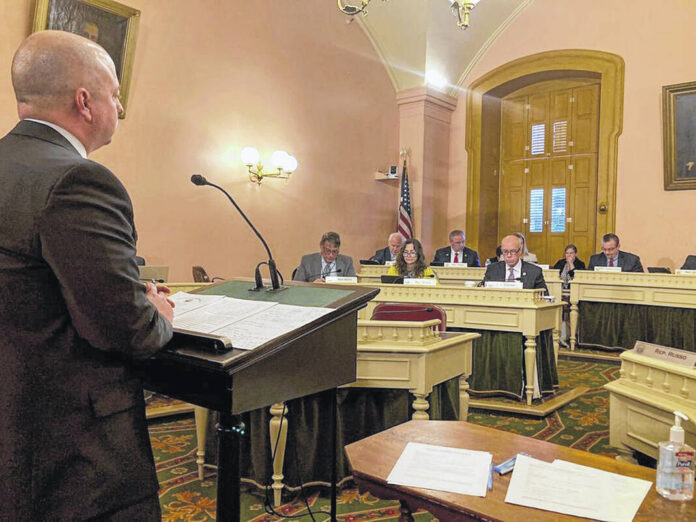COLUMBUS – Republican state lawmakers have tweaked a proposal to make it harder to amend Ohio’s constitution that’s potentially poised to advance during the legislature’s lame-duck session.
The measure now calls for requiring 60% approval from voters to pass state constitutional amendments proposed by the state legislature. Previously, the higher 60% threshold — higher than the current 50% plus one-vote threshold — would have applied only to proposed amendments launched by citizen groups.
The change, made Thursday by an Ohio House committee, addresses one of the concerns raised by critics of the rapidly emerging proposal.
“I think if we’re going to go the ballot, it’s just frankly a simpler argument to say 60% across the board,” said state Rep. Brian Stewart, the proposal’s sponsor.
The proposal comes as Democrats and liberal groups ready multiple future state ballot issues, including one that would protect abortion rights in the aftermath of the U.S. Supreme Court’s decision in June overturning Roe v. Wade.
In recent months, voters across the country either have approved measures enshrining abortion rights in their state constitutions, or rejected anti-abortion amendments. Michigan voters last month approved abortion protections with 55% support, while voters in Kentucky narrowly rejected a measure declaring no legal right to an abortion there.
The Ohio proposal appears to be picking up steam in the legislature’s waning days before lawmakers break at the end of the year. Senate President Matt Huffman, a Lima Republican, said Wednesday he personally supports the proposal and said it has the necessary backing from individual senators needed to be approved.
Republicans are aiming for the measure to appear on the May ballot for voter approval. If it passes, the higher approval threshold would apply to future state ballot measures, including an expected proposal preserving legal rights for abortion that could appear before voters in November 2023 or November 2024.
It still hasn’t been voted out of the committee that’s reviewing it, and would require 60% of support from both the House and Senate to advance. After that, it would head to voters for approval.
Stewart, of Pickaway County, told reporters Thursday he thinks the bill has support among House Republicans, though it could come down to whether individual Republican lawmakers are able to physically be in the Statehouse.
“I think as long as we have enough people not sick in the House, we have the support to get it done. If you look at the [voting] board, we haven’t had 60 votes here for a few days,” Stewart said. He was referencing the 60 votes the measure needs to advance in the House, where Republicans hold 64 seats.
During Thursday’s committee hearing, Stewart downplayed the immediate effects the proposal would have on planned state ballot issues that are teed up to arrive in the next couple of years, which also could include a measure raising the state’s hourly minimum wage to $15 and another reforming the state’s redistricting system.
He said the higher bar would apply equally to measures with backers across the political spectrum.
“The standard that should apply to permanent amendments to the Ohio constitution is a question that should be applied on its own merit looking ahead decades and not just a few months,” Stewart said.
Democrats, meanwhile, asked Stewart to explain the rush behind the measure, as well as why he proposed a 60% threshold.
Stewart said the debate about the current 50%-plus-one-vote threshold has been aired out for years, including by the Ohio Constitutional Modernization Commission, which in 2017 recommended raising the approval threshold to 55%, among other recommended changes.
Stewart effectively said he had to pick a number.
“We’re not trying to make it impossible to amend the constitution, we’re just trying to require more than a bare majority,” Stewart said.







